2016 Intermot news
CBR1000RR SP and SP2
The first thing to note about the new CBR1000RR is there is no new CBR1000RR. The lowliest of the 2017 Fireblades revealed so far is the CBR1000RR SP, with an even more exotic SP2 version sitting above it in the range.
An SP-branded Honda is a high-end version that ditches the usual Showa suspension and Tokico brakes for Öhlins and Brembo kit. The new one does this, but adds much more.
The 2017 Blade carries over the basic chassis and engine design from the old model, albeit in refined form. Honda is claiming an impressive 15kg weight loss, down to 195kg wet. This is helped by a lighter engine with more compression and more valve lift, which gets an 8kW power hike to 141kW. Those numbers don’t blow away the competition, but they at least put the Fireblade back in the game.
More importantly, Honda has been playing catch-up on the electronics front. The 2017 SP has traction control, a five-axis IMU, wheelie control, stoppie control, bi-directional quickshifter, electronic semi-active suspension, multiple riding modes, ride-by-wire throttles and adjustable engine braking.
With all that tech on the ‘normal’ SP version, what’s left to add to the SP2? The answer is Marchesini forged alloy wheels, plus a heavily revised engine that’s designed purely with racing in mind. It gets a new head, different valve angles, larger valves and different pistons, all to ensure that, once the factory race kit is fitted, it becomes a competitive proposition on track.
No prices have yet been mentioned, and the bikes are still more than six months from sale, but it’s inevitable that both will be much more expensive than a current base Fireblade. Will there be another version to replace the base Blade, sans Öhlins, Brembos and some of the electronics? Probably, but we’ll have to wait and see.
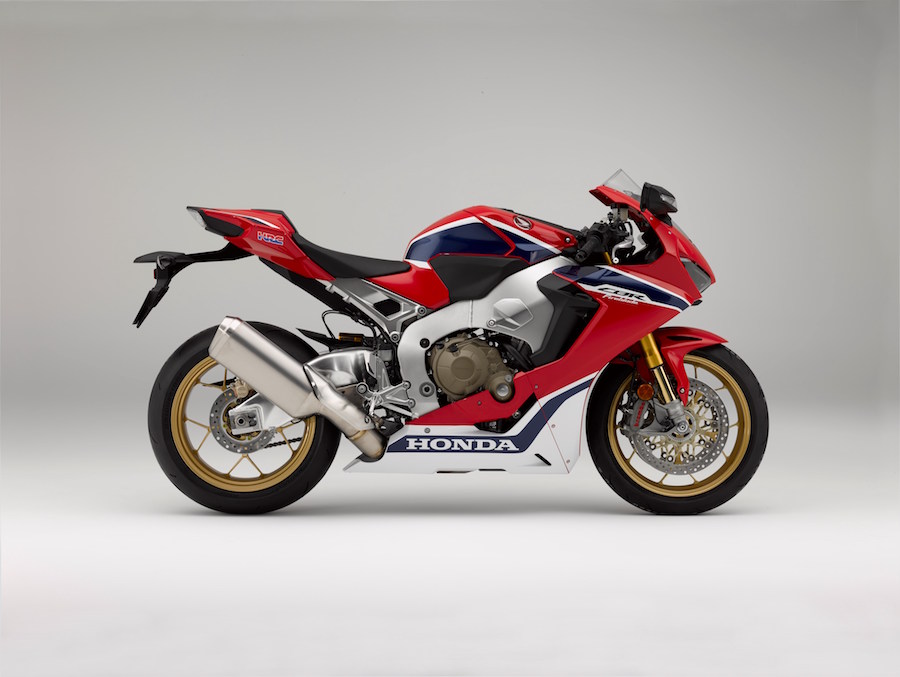
Suzuki GSX-R1000
Suzuki has finally revealed its road-going 1000cc superbike in two levels of specification. Both versions get an impressive 151kW at 13,200rpm and promise a bulging bottom end and midrange thanks to the clever centrifugal variable valve timing system that Suzuki has perfected on its GSX-RR MotoGP machine.
Elsewhere, the bike sports all the kit we expect from superbikes these days. There’s a six-axis Inertial Measurement Unit (IMU) feeding information to the 10-mode traction control system, plus three riding modes as well as anti-wheelie and anti-stoppie technology.
The base GSX-R1000 uses Showa Big Piston Front forks, while the homologation-spec GSX-R1000R gets even flasher Showa Balance Free Front suspension and a matching rear shock.
The R is also distinguished by its auto-blipping, bi-directional quickshifter and cornering ABS.
Both models get LED lights plus an LCD dash, and brakes are Brembo Monoblocs — regardless which model you choose.
The chassis is 20mm narrower than its predecessor and 10 per cent lighter, though Suzuki is being coy around the actual weight, while the engine is tilted upright to allow the bike to be 22mm shorter.
Both versions are due on sale around March or April, which could be decisive in sales terms as the GSX-R will be hitting showrooms before Honda’s new Fireblade.
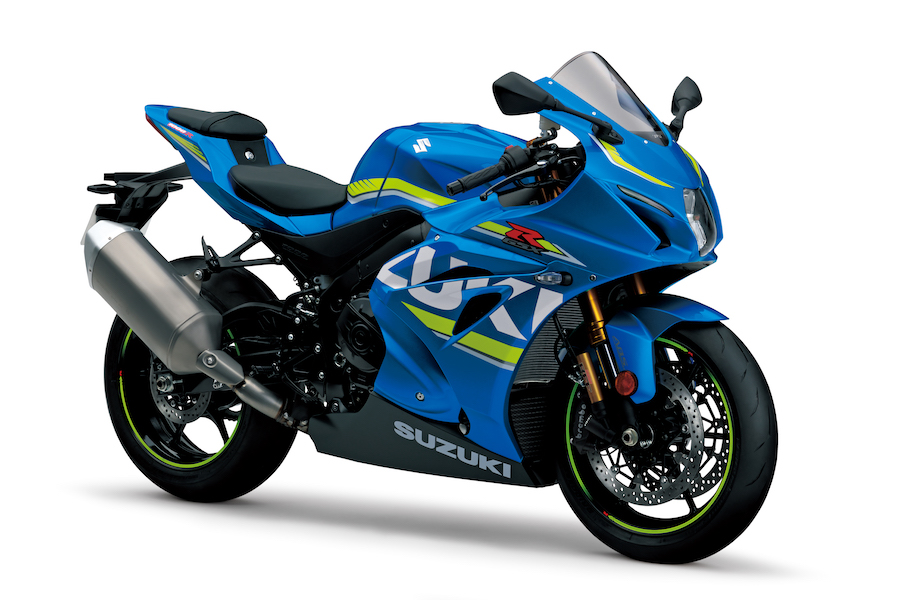
Kawasaki Z900
The Kawasaki Z800 always lived in the shadow of the brasher and faster Z1000. Now it’s been dropped entirely and replaced by a machine that comes much closer to the litre bike both in attitude and ability – the Z900.
We’ve known for a while that Kawasaki was reviving the Z900 name, and it turns out that the bike that’s getting it is a 92kW four-cylinder that uses a sleeved-down version of the Z1000’s engine. It’s actually less than 100cc smaller than the 1043cc Z1000, with a capacity of 948cc.
As on the newly announced Ninja 650 and Z650 (see p20), there’s a steel-trellis frame inspired by the H2, resulting in a wet weight of just 210.5kg. That’s 10.5kg less than the Z1000, and is likely to make the bike’s performance comparable, in spite of its 12kW power deficit.
It does, however, lack a lot of the larger bike’s technology – there’s no traction control, and ABS will be optional in markets where it’s not mandatory. With any luck, that will result in a temptingly low price on a machine that Kawasaki is surely hoping will steal sales from the likes of Yamaha’s MT-09.
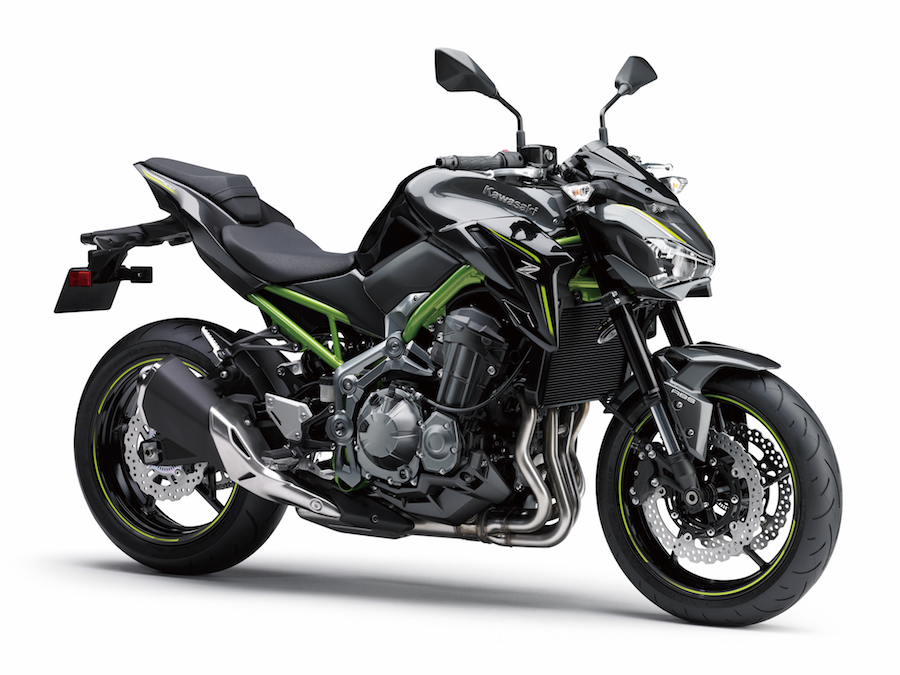
Yamaha MT-10 SP
Why should superbikes have all the fun when it comes to crazy-spec SP or RR versions? Yamaha reckons there’s scope for nakeds to get the same treatment and the MT-10 SP is precisely that.
Just as the MT-10 is effectively an YZF-R1 with its bodywork removed, the MT-10 SP is a stripped-bare version of the YZF-R1M, complete with Öhlins electronic suspension, a TFT dash and the same blue-and-silver colour scheme. A sure contender for the prize of best, and craziest, nakedbike of 2017.
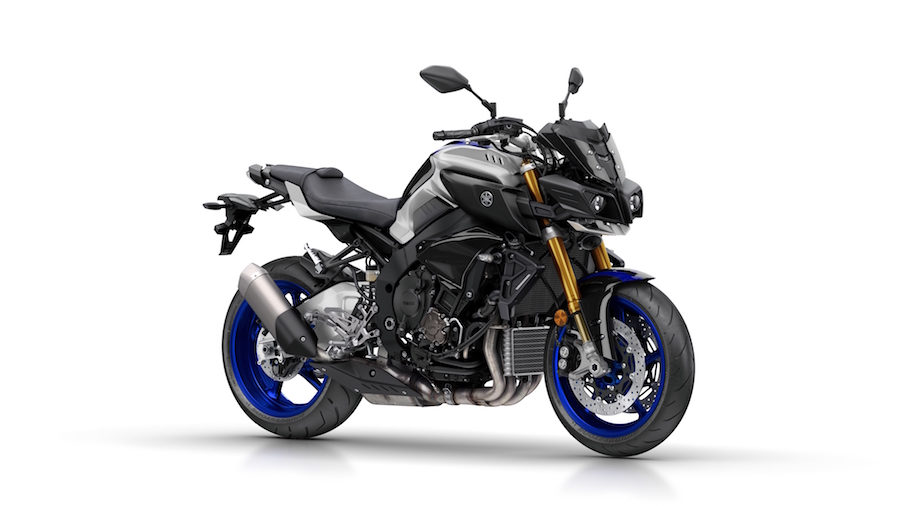
Ducati SuperSport
You could be forgiven for thinking Ducati had already launched its new SuperSport model – it’s been spied multiple times and was given a preview at World Ducati Week. But its official unveiling at Intermot has revealed the final details.
Powered, as suspected, by the Hypermotard 939’s 937cc Testastretta 11° engine, it’s got the same 83.1kW output as that bike. The engine is bolted to a Monster-derived chassis and wrapped in Panigale-inspired bodywork.
That might sound like a recipe for a Frankenstein’s Monster (pun intended) of a bike, but it’s actually a remarkably convincing machine. Given that 2017’s market is likely to be short on 600cc supersport bikes, the new Ducati – with similar performance but more practicality and technology – could be a tempting alternative.
The practicality comes from wide ’bars and an adjustable screen. It’s not a tourer, but that flexibility is likely to be useful to anyone using their bike on the road rather than the track. The technology comes in the form of the usual array of Ducati electronics – multiple riding modes, power modes, ABS, traction control, ride-by-wire – to ensure that it’s got just as many acronyms on the spec sheet as most superbikes, but without the farkles that average Joe neither needs or uses.
Power aside, the salient numbers are 96.7Nm of torque, a kerb weight of 210kg (184kg dry) and an 810mm seat height. Throw in 15,000km service intervals, with valve clearances every 30,000km and it’s looking like a Ducati to be used every day.
In normal Ducati fashion, there are two versions on offer. The basic SuperSport uses a 43mm USD Marzocchi fork and a Sachs monoshock while the SuperSport S features an Öhlins 48mm fork and an Öhlins shock. Both use radial-mounted Brembos, so there’s no change to braking spec between the two.
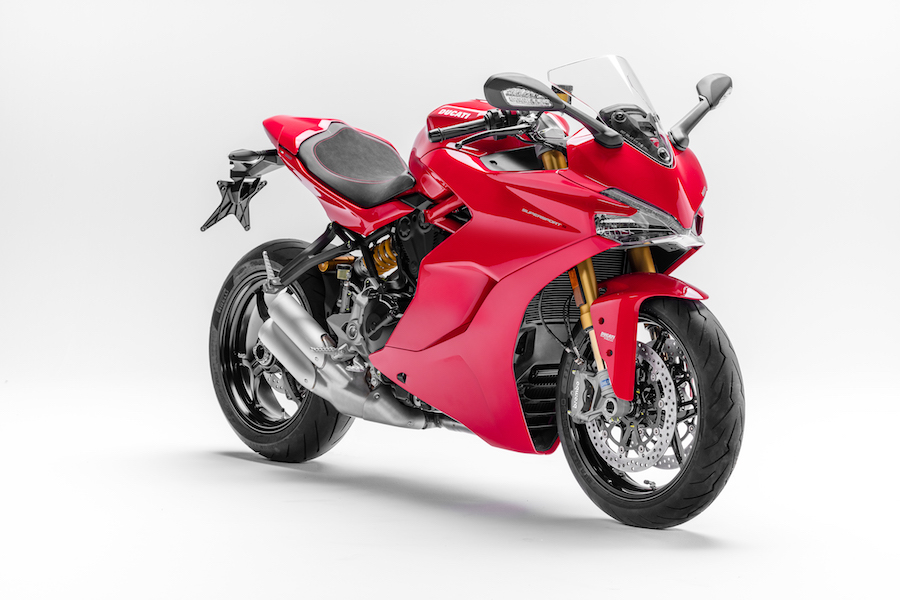
Kawasaki Ninja 1000
It’s only been 12 months since Kawasaki last tweaked the Ninja 1000 but it’s at it again with a new look in 2017. Styling changes include LED lights that are 1.4 times brighter than the old ones, plus a redesigned screen and fairing intended to cut down on buffeting. There’s a new ‘clean mount’ pannier system and Kawasaki has added an IMU to assist the traction control. There’s also a new instrument pack that includes a shift light and the ability to make the rev counter needle glow as it reaches the red line. If the bike’s new adjustable double-bubble screen doesn’t epitomise sports tourer, we don’t know what does.
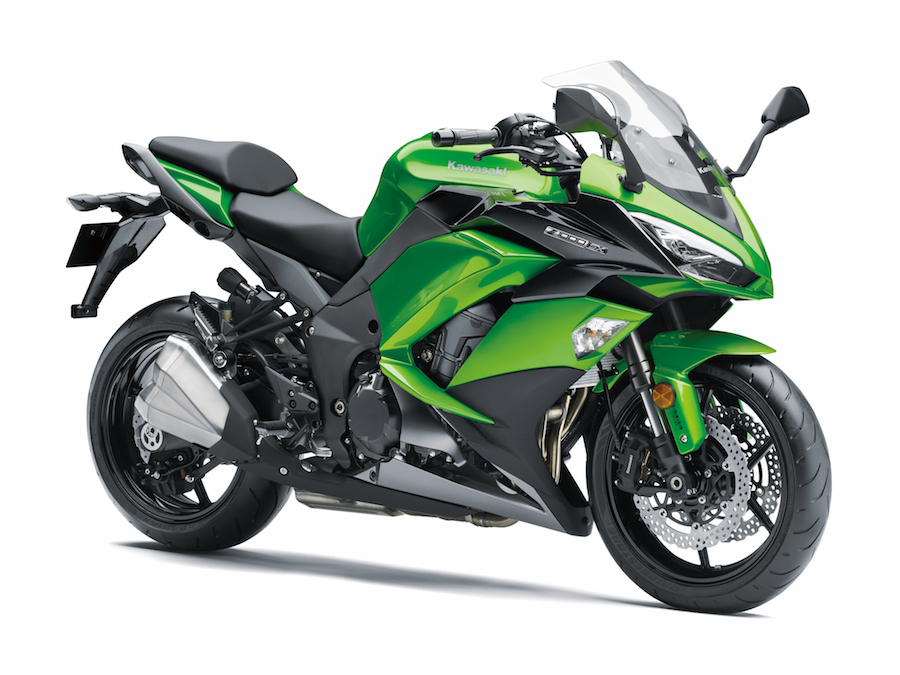
Yamaha MT-09
Given the MT-09’s enormous worldwide success, you’d have thought Yamaha might be happy to rest on its laurels for a while. But the firm has sprung a surprise facelift on the midsize nakedbike, and the fact that it’s a noteworthy improvement will have rivals scared.
The changes are mainly styling based. There’s a new set of LED headlights that are immeasurably neater than the old unit, helping reduce the visual weight of the nose and make the bike appear more compact (and more like its MT-10 sibling). Moving the turn signals lower down to the sides helps, too, while the instruments are dropped lower towards the lights, leaving a cleaner look in profile.
Moving to the back of the bike, the subframe has been shortened – again concentrating the bike’s mass towards its centre – and the licence plate hanger has been moved down to a swingarm-mounted bracket that helps to clean up the rear-end styling.
Technically, the changes include an assist-and-slipper clutch to reduce lever pressure and rear wheel hop on downshifts, plus an upshift-only quickshifter. The front suspension is also improved – addressing some customer feedback. There’s now compression adjustment on the left fork and rebound adjustment on the right.

BMW R nineT Pure and Racer
When BMW first brought the retro R nineT to the market a couple of years ago, it became somewhat of a runaway success for the German Marque. What appeared to be a niche machine has turned into a best-seller and, after revealing the Scrambler version 12 months ago BMW has now revealed two more variations: the Pure and Racer.
The Pure is aptly named. Looking much like the original R nineT, it borrows the lower-spec brakes and forks from the Scrambler to become an entry-level option. As with the original, which remains in the range, there’s a huge array of optional extras to personalise the bike.
The Racer, in contrast, is the version fans have been waiting for ever since the Roland Sands-designed Concept 90 was unveiled in 2013 — before we’d even seen the R nineT. It’s inspired by the old R90S and comes complete with a single seat, a bullet fairing and low, café-racer ’bars as standard. Suspension-wise, it again uses the cheaper stuff, as on the Pure, no doubt leaving BMW with scope to offer a higher-spec version sometime in the future, combining the Racer’s styling with the R nineT’s upside-down fork and radial brakes.
Performance-wise, both bikes are identical to the other R nineT models, with 81kW from the 1170cc Boxer twin. Both claim a 200km/h top speed and 0-100 times of around 3.5 seconds.

Suzuki GSX-S750
While the GSX-S750 was billed as a new model at its Cologne unveil, it’s actually a redeveloped GSR750 – which was already marketed under the GSX-S name in some countries.
A nakedbike along the lines of the GSX-S1000, it’s built around a revamped version of the 2005 GSX-R750’s K5 engine, offering 84kW at 10,500rpm and 81Nm at 9000rpm. In line with modern expectations, it gets a three-mode traction control system and changes to the styling, including new wheels and a new swingarm, plus radially mounted brake calipers.
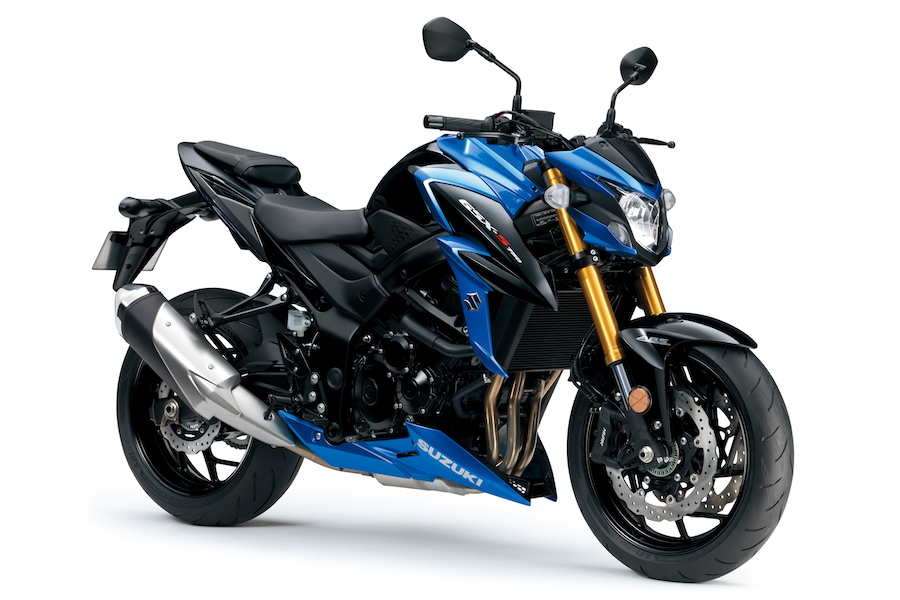
Kawasaki ZX-10RR
The HOMOLOGATION OF bikes for racing has led to some of the most legendary machines in history. And now Kawasaki – keen to keep the edge in WSBK – has done the same.
The ZX-10RR is the natural successor to old models like the ZXR750R and the ZX-7RR, featuring a limited production run and a raft of technical changes you’re really not likely to notice until the bike has been tuned to full race spec.
On the outside there isn’t much to see – just some RR stickers and the firm’s winter test paint job. Underneath, however, a lot of work has been done. The engine has a new cylinder head and a beefed-up bottom end to make it more tuneable.
There are also forged Marchesini wheels, just as on the new Fireblade SP2, and Brembo M50 Monobloc brakes. As on the rest of next year’s ultra-high-spec bikes, there’s a multi-directional auto-blipping quickshifter to cope with clutchless gear changes and, just as on those old homologation specials of yore, the head angle and swingarm pivot point can be adjusted once the race kit is fitted.
It’s set to be a limited edition. Kawasaki says
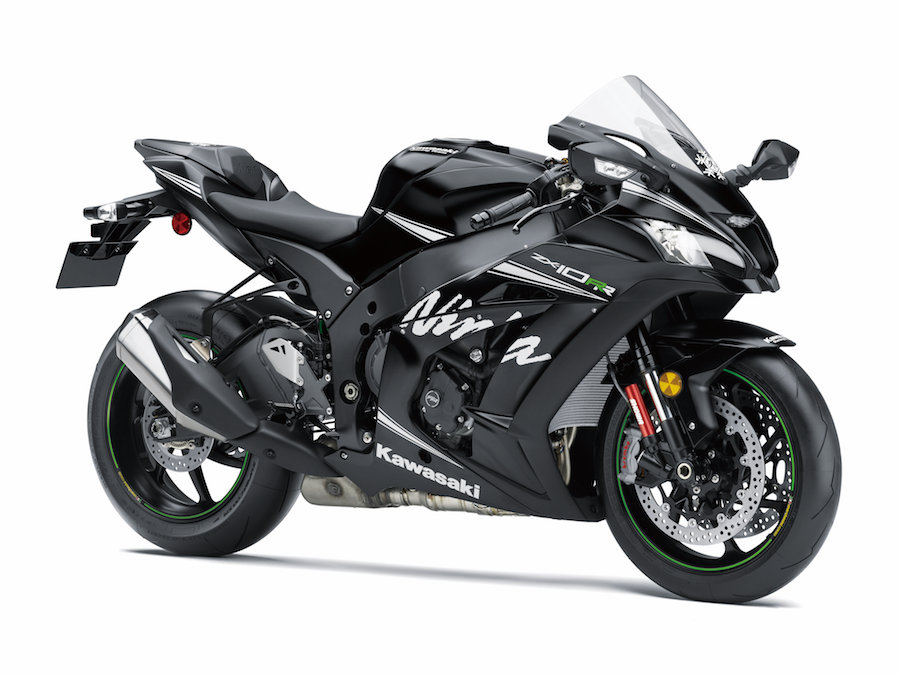
Suzuki V-Strom
A head-to-toe makeover for the smaller Suzuki V-Strom leaves the bike looking very much the baby brother to the V-Strom 1000. The 2017 model’s styling is nearly indistinguishable from the larger bike. It sits atop a carried-over chassis and a tweaked version of the age-old Suzuki 650cc V-twin, which has been made Euro 4 legal.
The firm has also added a V-Strom 650 XT to the range, with wire wheels instead of alloys, hand guards and a
belly pan.
Both versions get two-mode traction control and the firm’s Low-rpm Assist system that increases engine speed automatically when you’re pulling away to help ensure the engine doesn’t stall.
The bigger V-Strom 1000 hasn’t been left alone, either. For 2017 the bike gets a Motion Track Brake System using information from the IMU to help the ABS operate in corners and optimise brake pressure, as well as distributing some pressure to the rear brake when needed. It also gets the same low-rpm system as the smaller bike and Suzuki’s easy-start system, which means there’s no need to pull the clutch in while starting the bike. A V-Strom 1000 XT with wire wheels has also been added to the range.
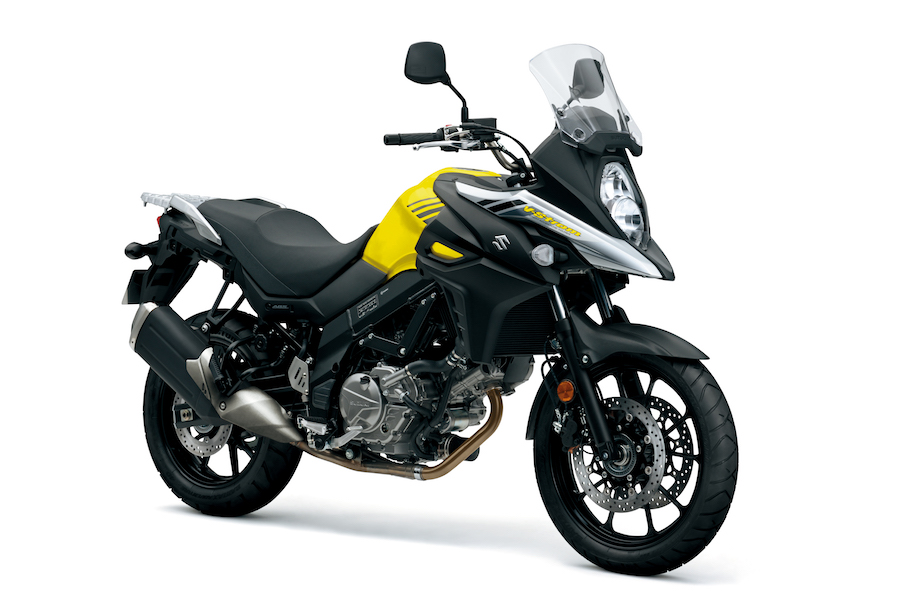
Honda CB1100EX and RS
No surprises from Honda’s revamped CB1100 range. The CB1100EX perfectly mimics the CB1100 Concept from the 2015 Tokyo Show, while the sportier CB1100RS copies the Concept Type II from the Osaka show earlier this year.
The difference, of course, is that these are production bikes that will be on sale next year. The EX is the more retro machine, with 18-inch wire wheels and simple brakes and suspension. The RS version gets a thicker 43mm fork and radial-mounted Tokico calipers, plus 17-inch alloys to fit stickier tyres. Both are heavy, though – 255kg for the EX, 252kg for the RS – and the engine’s peak of 66kW isn’t likely to set the road on fire.

Ninja 650 and Z650
Kawasaki needed to revamp its old ER-6 range to meet Euro 4 emissions targets and it has taken the opportunity to rebrand the bikes in the process. The faired model, previously known as the ER-6f will now be known as the Ninja 650 – a name already used in America and Australia – while the naked ER-6n will be the Z650.
It’s not just a name change, though. Both models get a new steel trellis frame, new swingarm and a revised engine, too. Power hasn’t changed much, at 51kW, but the new engine is promising significantly better fuel economy and the bikes should feel faster because they’re both much lighter than their predecessors. The chassis takes its inspiration from the H2’s trellis, and weighs just 15kg. Although full figures have yet to be released, the naked Z650 is believed to weigh 187kg wet, 10kg less than the old ER-6n, while the Ninja 650 weighs in at 193kg wet.
Both bikes also get new styling, with the faired version looking particularly good thanks to a more aggressive shape. On board, you get new instruments with a shift light and a rev counter needle that glows red as you approach red line.

Three new Bonnevilles
AMCN READERs WON’T be too surprised by these three new Triumph models – we’ve had spy shots of all of them. Perhaps the most exciting addition is the new Street Cup. As its name suggests, it’s based on the Street Twin, but with a smattering of Thruxton parts to create an entry-level café racer. It might be at the lower end of Triumph’s range, but in showroom form it’s an appealing combination.
The chassis and engine are pure Street Twin, with 41kW from the 900cc High Torque version of the new engine, and the Street’s modern-looking alloy wheels. The addition of low clip-on ’bars as well as the footpegs, headlight and clocks from the Thruxton, and a new seat and seat cowl, create a café racer that isn’t self-consciously retro styled.
The same 900cc engine also powers the newly-launched Bonneville T100. Looking near-identical to the existing T120, it’s only easily distinguished from its 1200cc sibling by its single front brake disc and the tiny 900 badge on the cases.
Like other bikes in the range, its retro looks belie technology including traction control and multiple riding modes, as well as details like an underseat USB socket. A T100 Black version was also revealed, and it’s just that, very black.

Suzuki GSX-R125
Suzuki used the show to unveil a baby sportsbike, dubbed the GSX-R125. It’s not a new idea – the firm had a GSX-R125 ready to go almost a decade ago but, cancelled the project at the last minute. This isn’t just that old bike revived, though, but a completely new design. It’s powered by a new 125cc single, it gets tech including LED headlights, an LCD dash and a keyless ignition. Detailed specs have yet to be released, though, as the bike is still almost a year from being showroom ready.
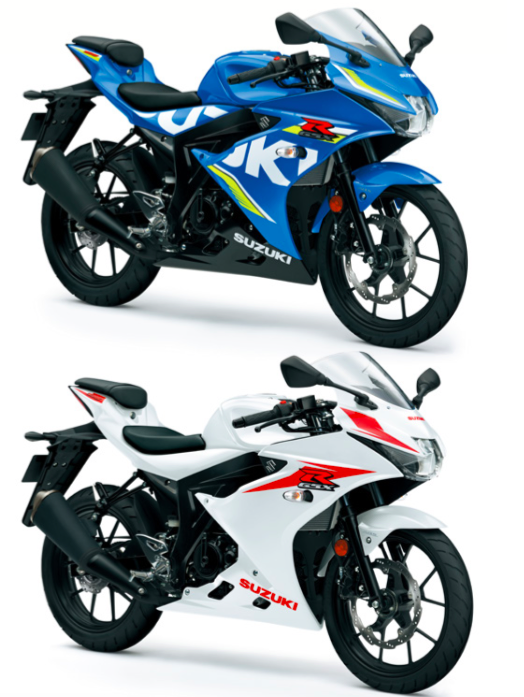
BMW S 1000 R, RR and XR
All BMW’s four-cylinder S1000 models – the R, RR and XR – are being updated for 2017.
The RR gets mild engine tweaks to meet Euro 4 emissions rules and will be a single-seater as standard, with pillion kit as a no-cost option. The XR gets a mild power boost to 121kW and a new rubber-mounted handlebar. The biggest changes are to the S1000R, which for 2017 adopts the latest-spec RR chassis, gets a slight restyle and features a titanium silencer. It also gets the 121kW engine spec and rubber-mounted ’bar
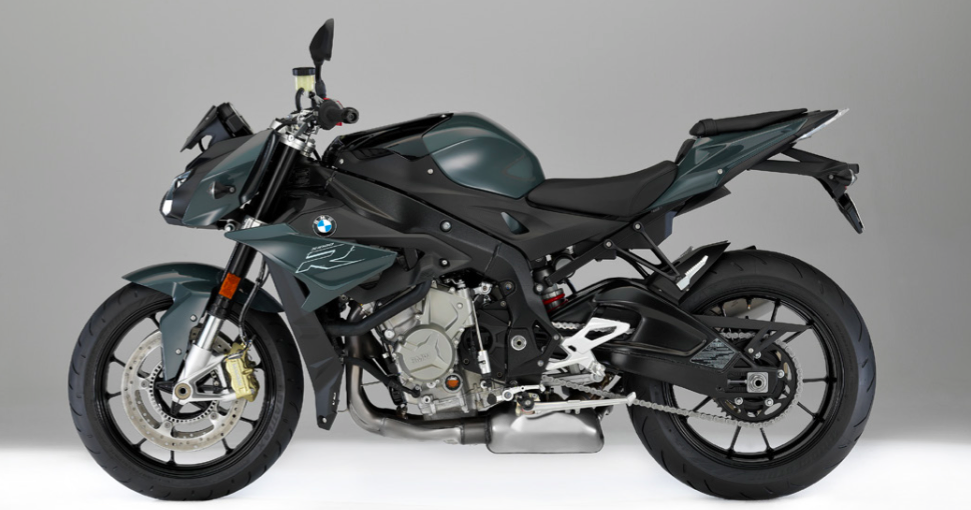
Ben Purvis











